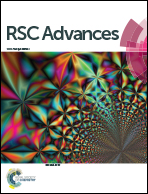Layer-by-layer self-assembled laminin/fucoidan films: towards better hemocompatibility and endothelialization
Abstract
Rapid endothelialization is an effective solution to thrombosis and restenosis in vascular-implanting materials. Surface modification is a concise and impactful approach to improve biocompatibility including endothelialization and hemocompatibility. In this paper, we report on a layer-by-layer self-assembly of laminin/fucoidan multilayers for the improvement of hemocompatibility and endothelialization. The chemical changes and wettability of the surface assembled films were investigated by static water contact angle measurement, X-ray photoelectron spectroscopy, colorimetric and immunosorbent assay. The real time assembly process was in situ monitored by quartz crystal microbalance with dissipation. The platelets adhesion/activation test showed that significantly fewer platelets were adherent and activated on the surface of assembled three layer laminin/fucoidan samples with the outermost layer of fucoidan. Furthermore, cell culture tests indicated that the adhesion of human umbilical vein endothelial cells and endothelial progenitor cells were promoted on the surface of an assembled five layer laminin/fucoidan sample with the outermost layer of laminin. It is concluded that layer-by-layer self-assembled laminin/fucoidan multilayers are a promising candidate for a biofunctional coating applied to vascular implants.


 Please wait while we load your content...
Please wait while we load your content...